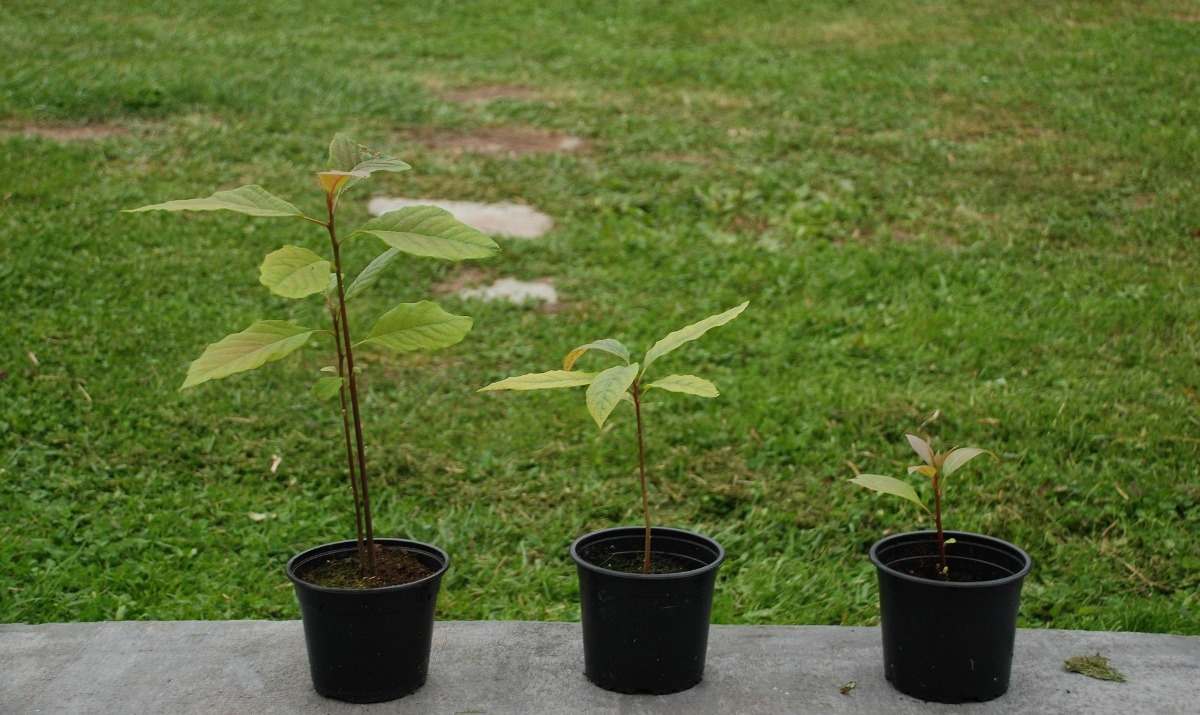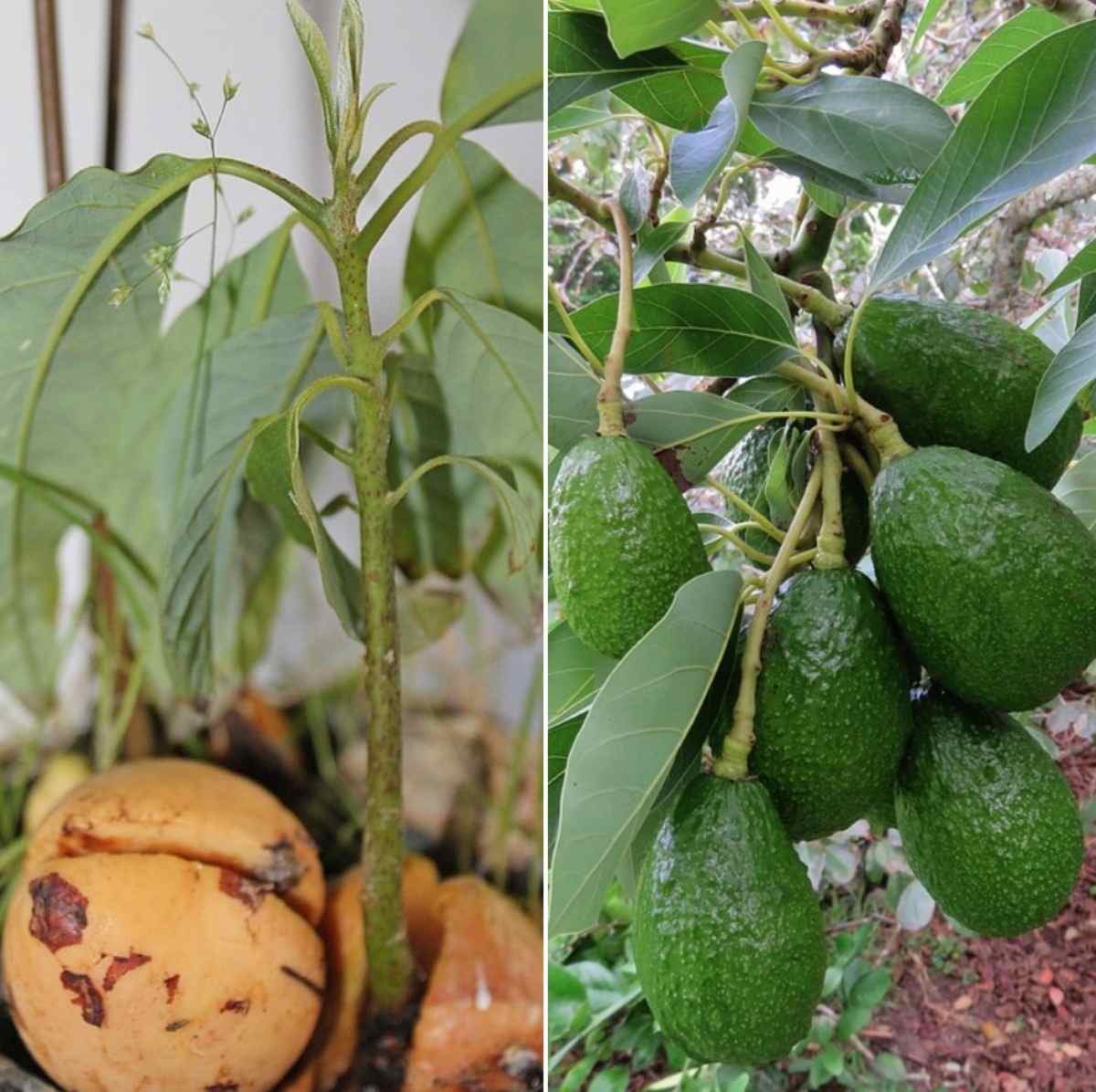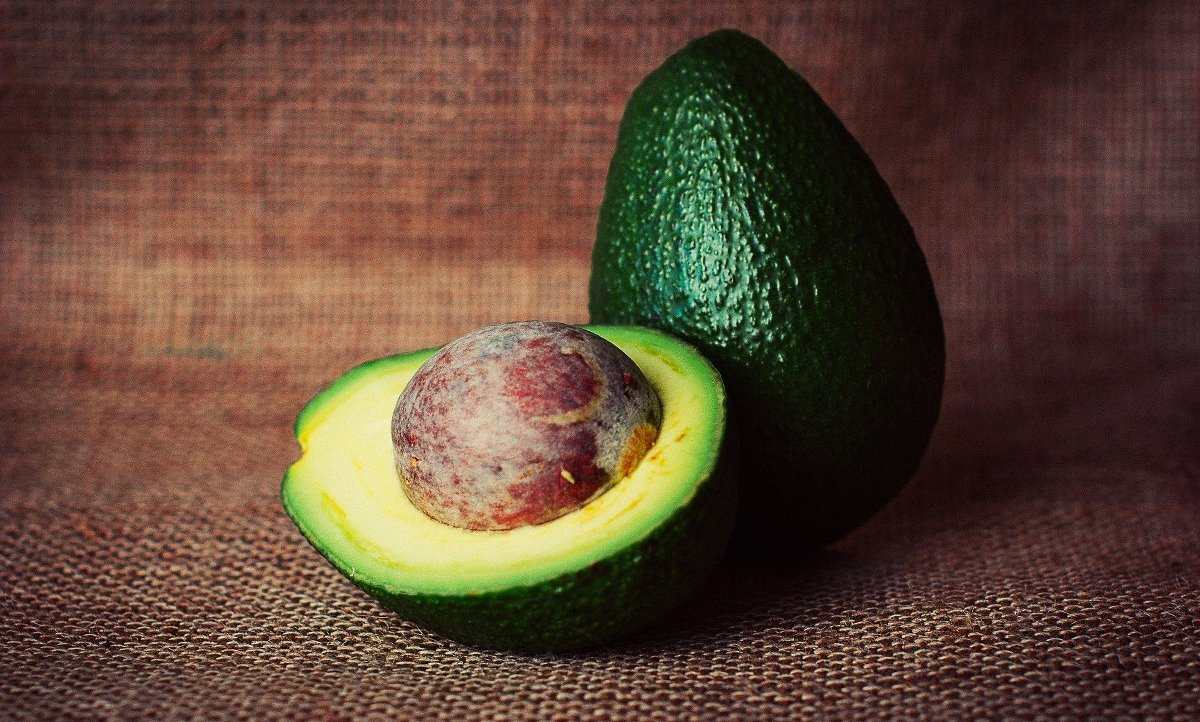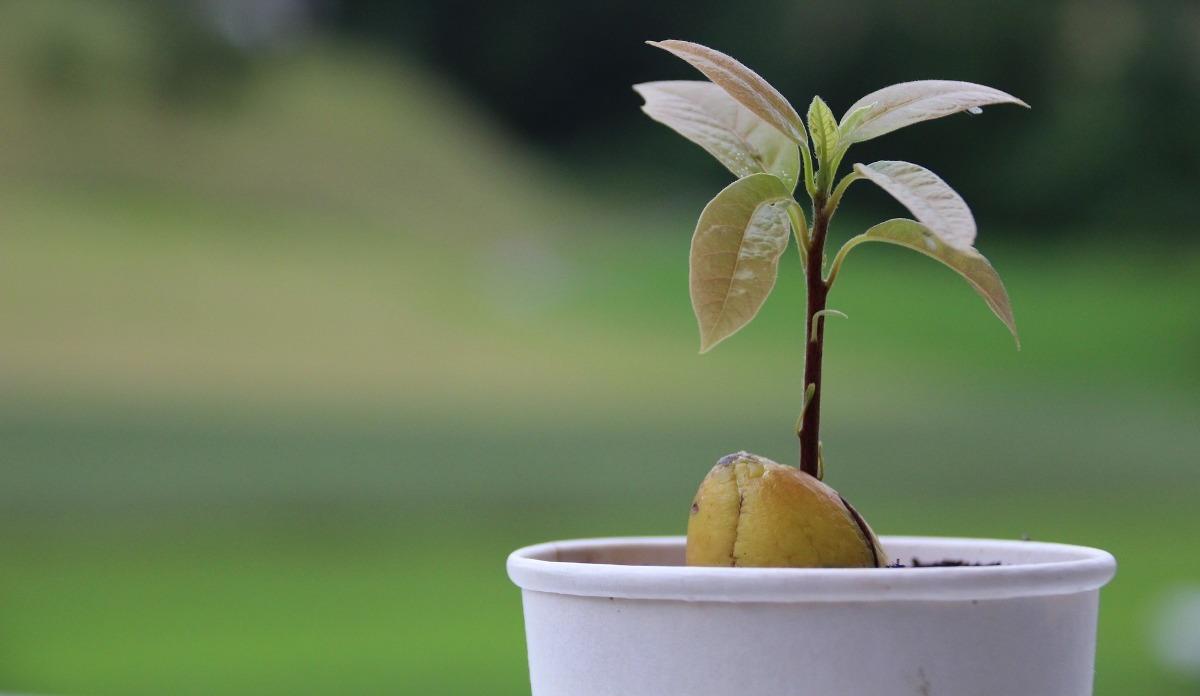Introduction Avocado seed germination process
Avocado fruits are one of the wonderful fruits of summer. The Avocado is a member of the flowering plant family Lauraceae. The Avocado is also known as alligator pear or butter fruit. There are dozens of varieties of Avocado fruits ranging in size, color, and texture. Fruits are an excellent source of monounsaturated fat and vitamin E. Though, avocados are high in calories due to the high-fat content. Growing Avocado from seed can take 8 to 12 years to produce avocados and the avocados may not be the same quality as the parent plant. The time it takes for the seed to germinate and the success rate is quite variable. There are steps you can take, though, to help ensure success and speed up the Avocado seed germination process.
In this article we also discussed below topics;
- Process of growing Avocado from seed
- Time to take Avocado seeds take to germinate
- How do you germinate Avocado seeds
- Avocado seed germination temperature
- Process for germinating Avocado seeds
- Avocado seeds germination period
- Germinate Avocado seeds indoors
A step by step guide to Avocado seed germination
Best soil requirement for growing Avocado
Avocado trees like the soil’s pH level around 6 to 6.5. If you have heavy clay soil, elevate the Avocado tree in a mound for better drainage. You can use new, rich humus soil or recycle some old soil from the garden or another pot. If you are using old soil, make sure to remove any weeds, grasses, or old roots that can reduce the Avocado seed’s chances of sprouting.
Water requirement for growing Avocado
Avocado trees typically need to be watered 2 to 3 times a week. When watering the tree, soak the soil well, and allow it to dry out somewhat before watering again. Then, check the soil before watering each time to make sure it has dried somewhat. If the soil from around the plant roots can hold the impression of a hand when squeezed, it has enough water.
Growing an Avocado seedling
Avocado seedlings grow best in bright, indirect light and at temperatures no lower than 60F. Plant roots emerge from the base of the pit first, followed by one or more shoots from the top. The pit splits open when the shoots emerge, however, this is normal. To encourage the seedling to develop into a bushy plant, prune the main shoot to about 3 inches when it’s 6 inches tall. Wipe the blades of pruning shears with rubbing alcohol before and after pruning the seedling.
You may be interested in Growing Ginger from Roots in Pots.

If the pit was growing in water, transfer it to a pot filled with sandy soil no longer than 3 weeks after pruning it. Pull out the toothpicks or break them off, and put the seedling in the soil so that it’s buried to one-third of its depth, taking care not to damage the roots. Water an Avocado seedling with tepid water when the soil is dry to a depth of about 1/2 inch. If the lower leaves grow small, the plant could need fertilizer. Avocado is planted out to a distance of about 6 to 12 meters depending on the vigor of variety and its growth habit.
Preparing the pot for Avocado
If your Avocado tree is going to grow in a pot all its life, select a 15-gallon pot with drainage holes in the bottom right from the start. Then, terracotta is a good choice. Good drainage is key to good plant growth. Avocado trees contain a relatively shallow root system. If fully saturated for more than 2 days, the roots will rot and the plant will die. Loose and sandy, but fertile soil that provides excellent drainage are very important. To help drain excess water away, you can lay some stones at the bottom of the pot before filling it up with soil.
Different methods to sprout an Avocado seed
Water method
There are mainly two methods to sprout an Avocado seed. The first method involves soaking the seed in warm water for several hours or overnight. Next, dry the Avocado and insert 3 to 4 toothpicks into the top narrow end of the seed and suspend its bottom, or wide end, down in a small glass of room temperature water. Then the water should come up to just below the picks. Do not cover the glass and put it in an area where it will receive bright indirect sunlight for part of the day. Maintain the water level by adding more as it evaporates, then replace all the water with fresh if it becomes cloudy. Depending on the growing conditions and room temperature, it can take several weeks for the Avocado seed to sprout. After about 2 weeks, start checking the seed and watch for a crack to develop in the skin, which indicates germination.
Soil method
The other method of sprouting an Avocado is placing the wide end of the seed into a small pot containing a peat-based growing medium. Then, soaking the seed overnight reduces the likelihood of contaminants infecting the soil. The medium must be kept moist but not saturated, and the seed placed in bright indirect light. Again, do not cover the pot and don’t allow the potting soil to dry out between watering. Slicing a piece of the skin from the top end of the seed can speed the process up, but it’s not necessary. If using this process, you will not see the root develop as you would if the seed were in a clear glass, but after several weeks you see the seed sprout appear through a large crack at the top.
Grow an Avocado Plant from seed
Avocado seeds can be started in a glass of water or in a moist, porous soil mixture. Either will work, but the soil technique will provide faster results.
In case if you miss this: Sapodilla Seed Germination.

If the seed is started in water, insert 3 or 4 toothpicks in the seed about halfway down the sides. Next, fill a small glass with water to the brim and put the seed in the glass, flat end down, so the toothpicks rest firmly on the brim. The toothpicks must be supporting the seed so that the pointed half is out of the water and the bottom half is in the water. The sprouting tip will come out of the pointed end, thus be sure the flat end is immersed in water. Put the glass on a sunny window sill or some other well-lighted spot. And add water as needed to keep the bottom half of the seed wet at all times.
After a few weeks, a small root must appear from the flat end, and there should be signs of a small shoot at the pointed end. Tiny plant leaves will develop and grow on this shoot. Later, when the main stem emerges, plant the seed in a pot with house plant potting soil.
If the Avocado seed is started in soil, fill a large container with plant potting soil. Plant the seed then the pointed end is about an inch above the soil surface. Keep the soil moist at all times until the plant is established.
Water the plant enough to keep the soil moist but not wet. Wet soil will result in curled plant leaves and soft stems. Dry soil will cause dry plant leaves that eventually fall off. Avocado plants should be fertilized every 3 months with a standard houseplant fertilizer. Also, remember that plants require good, indirect light. Because plants grow into trees, provide them with plenty of growing space.
Process of Avocado seed germination
- First, wash the seed. Using three toothpicks, suspend its broad end down over a water-filled glass to cover about an inch of the Avocado seed.
- Place it in a warm place out of direct sunlight and replenish water as needed. You should see roots and stem sprout in about 2 to 6 weeks. When the stem is 6 to 7 inches long, cut it back to about three inches.
- When the roots are thick and the stem has leafed out again, plant it in rich humus soil in a 10 inches diameter pot, leaving the seed half exposed.
- Give it frequently, light watering with an occasional deep soak. Generally, the soil must be moist but not saturated. Yellowing Avocado leaves are a sign of over-watering; let the plant dry out for a few days.
- If Avocado leaves turn brown and dry at the tips, too much salt has accumulated in the soil. Let the water run freely into the container and drain for several minutes. When the stem is about 12 inches high, cut it back to 6 inches to encourage the growth of new shoots.
- While it is true that you can grow a tree from an Avocado seed, keep in mind that a tree grown from seed will be different from its parent variety and may take 7 to 15 years to begin producing fruit. Avocado fruit from a tree grown from seed tends to have different flavor characteristics than their parent variety. Known plant varieties such as Hass avocados are grafted to preserve their varietal characteristics rather than grown from seed.
Avocado seed maturity and viability
The age of the seed mainly affects the germination rate. Most Avocado seeds are viable for only one month after the fruit is picked, some hybrids, such as “Lula” will stay viable for 5 months in the refrigerator. If the Avocado seed fails to germinate, it could well be that it lost viability before you could plant it.
You may also like the Mango Seed Germination, Time, Temperature, Process.

Transplanting of Avocado
When your seed sprouts, the root will emerge from the bottom end and the stem and new leaves from the top. Give it time to develop a good root system before transferring it to a pot that contains fresh sandy soil that allows for good drainage. Because the Avocado plant can potentially develop into a good-sized plant, use a pot that measures at least 12 inches across. If you sprouted seed in water, dig the hole in the soil to accommodate the entire root system and backfill up to just below the lowest leaves. If transplanting the sprout from a pot, turn the small pot over and tap it so that both sprout and soil come out. Dig the hole in the new pot large enough to accommodate the entire root ball and accompanying soil, as the less you disturb the roots the better.

Avocado plant care
- Keep the Avocado plant in a warm, sunny location.
- Water frequently with an occasional deep soak and keep the plant moist but not overly saturated.
- Pinch the stem back every time your plant grows another 6 inches or so, in order to encourage a bushier appearance. If you live in a warm enough climate, plant trees outside once it is big enough.
- If plant leaves turn yellow, you may be overwatering. Allow the soil to dry more before watering to avoid drowning the Avocado plant.
- Keep an eye out for aphids. Remove them from plants with a gentle spray of water (outside or in the sink or shower) and spray insecticidal soap or neem oil to keep aphids from returning.
- Yellow leaves or leaves that are falling off can indicate that the Avocado plant is getting too much water, not enough sun, and not enough nutrients. Brown Avocado leaves can indicate salt or chloride burns from minerals in the water or fertilizer. Potted plants commonly encounter these problems because there is less drainage, and nutrients and minerals are likely to concentrate on the soil.
Some questions about Avocado seed germination
You may also check this: Best Fertilizers for Plants.

How much time take for an Avocado plant to bear fruit?
Avocados planted from seed may take anywhere from 5 to 13 years to bear fruit. Don’t expect the potted plant to flower or produce fruit, and even if there is a fruit, it likely won’t have the same quality and taste as your typical avocado.
What can I do about Avocado tree dropping fruit?
To minimize Avocado fruit drop of good “fertilized” fruit, avoid stressing the tree. Don’t under or overwater it. Fruit retention is also better when there are other Avocado varieties present to provide cross-pollination, and that these crossed fruits have a higher tendency to stay on the tree. There is also some indication that over-fertilizing with Nitrogen during the early fruit stages can somewhat influence fruit drop.
How to know when avocados are ripe and ready to pick?
Avocado fruits do not “ripen” on the tree, that is, they do not get soft while on the tree. They mature on the tree. Once you pick an avocado, it can take from 7 to 21 days for it to soften when left at room temperature. You can speed the process up slightly by placing the avocado in a bag with some other ripe fruit or slow the process down by keeping the Avocado fruit in the refrigerator.
Do you have to dry Avocado seeds before planting?
Avocado seeds planted in potting soil take longer to germinate but successful seed germination is more likely. Remove the outer flesh and wash the Avocado seed in warm water. Let the seed dry for 24 to 48 hours at room temperature and the skin is often easier to peel when the seed dries for 48 hours.
Why is Avocado seed turning red?
Avocado pits have a milky, bitter liquid, which turns red upon contact with oxygen in the air. The reason is the high concentration of tannin in Avocado fruits. Only the Avocado pit will turn red, and only after its surface has been broken or it has become very overripe or decayed.
Why is an Avocado seed not sprouting?
Suspend your Avocado seeds in a glass of water, broad side down, by inserting 3 to 4 toothpicks into the seeds. Place it in a warm location out of direct sunlight and keep the jar filled with water so that at least an inch of water covers the bottom of the seeds. You can expect it to take 2 to 6 weeks to sprout.
How long does it take for an Avocado seed to sprout in the water?
Use about three toothpicks to suspend it broad end down over a water-filled glass to cover about an inch of the seed. Then, put the glass in a warm place out of direct sunlight and replenish water as needed. You should see the roots and stem start to sprout in about 2 to 6 weeks.
How long can you keep an Avocado seed before planting?
Avocado seeds of 20 varieties, packed in dry peat moss and stored at 42F, kept well for at least 8 months. Cutting off a small portion of both ends of the Avocado seeds promoted quicker and more even germination.
Conclusion of Avocado seed germination process
Well, seed germination is a very important part of any plant seedling. The quality of seed germination results in better quality produce and a healthy tree lifecycle. You may also be interested in Almond Seed Germination, Time, Temperature.
My avocado has more than 2 sprouts what do l do